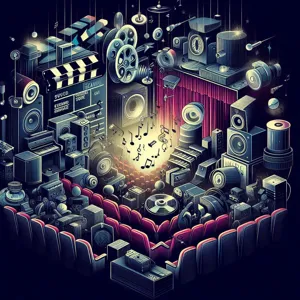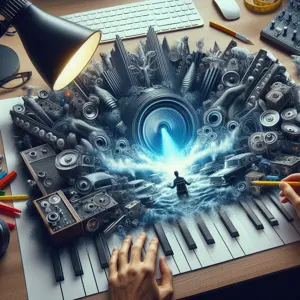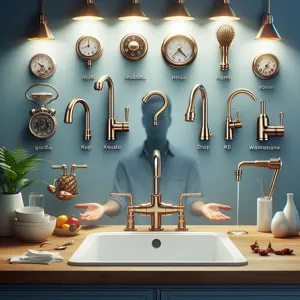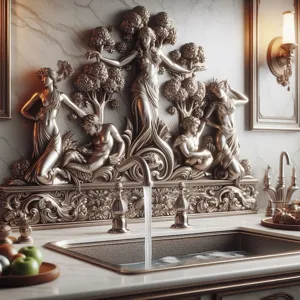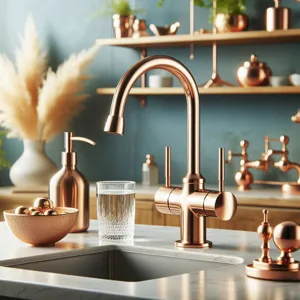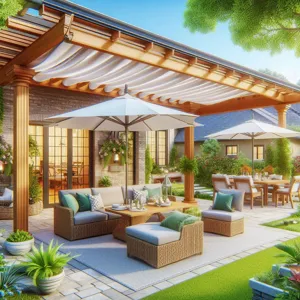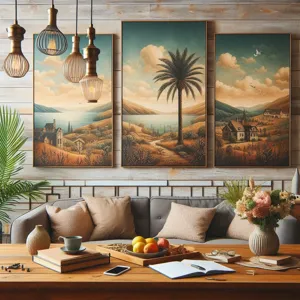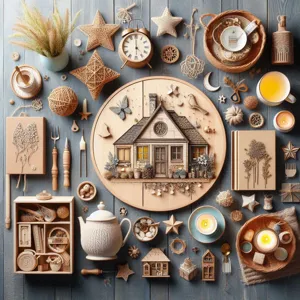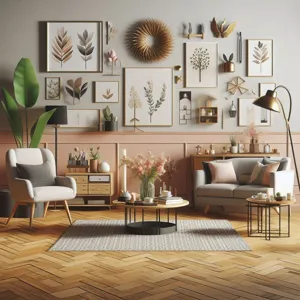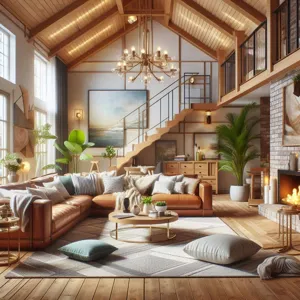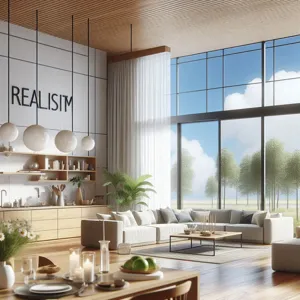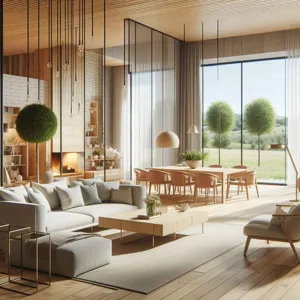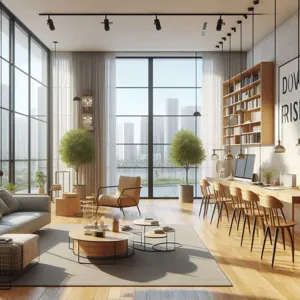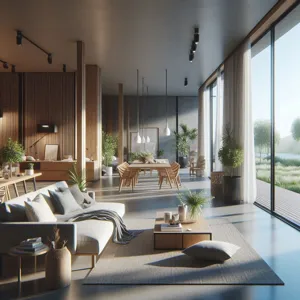In a world where style meets engineering prowess, the automobile industry continually pushes the boundaries of elegance and innovation.
Car enthusiasts and casual drivers alike are always on the lookout for vehicles that not only offer top-tier performance but also make a statement on the road. From sleek sedans to luxurious SUVs, today’s market boasts an impressive array of stylish cars that redefine what it means to drive in sophistication. These vehicles encapsulate the perfect blend of cutting-edge design, luxurious interiors, and advanced technology, making them more than just modes of transportation—they are symbols of status and artistry. In this blog post, we will explore the top 10 stylish cars currently captivating the automotive scene, showcasing how each model stands out in terms of aesthetics and craftsmanship, and why they deserve a place in the spotlight for those who appreciate the finer things in life. Buckle up as we embark on a journey through elegance and innovation!
1. Introduction: The Intersection of Style and Performance

In the world of automotive design, the pursuit of elegance is not solely about aesthetics; it’s a dynamic interplay between style and performance that captivates the senses and elevates the driving experience. Today’s luxury vehicles are not just modes of transportation; they are masterpieces of engineering and artistry, each one telling a unique story through its design, features, and capabilities.
As we navigate through an era where sustainability and innovation are at the forefront, manufacturers are pushing the boundaries of what defines a stylish car. From sleek lines and striking silhouettes to cutting-edge technology and unparalleled performance, these vehicles embody the essence of sophistication. They attract admirers not just for their looks, but for the exhilarating experiences they offer behind the wheel.
In this blog post, we will explore the top 10 stylish cars that are currently redefining elegance in the automotive market. Each selection represents a perfect blend of luxury, comfort, and performance, showcasing how modern engineering can transform a vehicle into an elegant statement of style. Whether you are an automotive enthusiast or simply someone who appreciates the finer things in life, these cars are sure to inspire admiration and ignite your passion for the open road. Join us as we delve into the world of automotive elegance and discover the vehicles that stand out in a crowded market, proving that style and performance can indeed coexist harmoniously.
2. Criteria for Elegance in Cars
When it comes to defining elegance in cars, it’s essential to consider a variety of factors that contribute to the overall aesthetic and emotional appeal of a vehicle. Elegance is not merely about the price tag or the brand name; it encompasses design, craftsmanship, performance, and the experience a car provides to its driver and passengers. Here are some key criteria to keep in mind when assessing the elegance of a car:
1. **Design and Aesthetics**: The silhouette of a car plays a crucial role in its elegance. Smooth lines, balanced proportions, and a cohesive design language are essential elements. A car that exudes refinement often features subtle curves and a sophisticated color palette, allowing it to stand out without being ostentatious.
2. **Materials and Craftsmanship**: High-quality materials are a hallmark of elegant cars. From supple leather upholstery to polished wood accents and brushed metal trims, the choice of materials speaks volumes about the car’s character. Attention to detail in craftsmanship, such as tight panel gaps and flawless finishes, enhances the perception of luxury.
3. **Performance and Handling**: True elegance is also reflected in a car’s performance. A vehicle that delivers a smooth, responsive drive with a refined ride quality embodies sophistication. The balance between power and grace is vital, ensuring that every journey is not just a commute, but an experience of exhilaration and comfort.
4. **Innovative Technology**: Modern elegance incorporates cutting-edge technology seamlessly into the driving experience. Features such as intuitive infotainment systems, advanced driver-assistance technologies, and premium audio systems enhance convenience and enjoyment, while remaining unobtrusive to the vehicle’s overall design aesthetic.
5. **Brand Heritage and Identity**: The legacy of a car manufacturer often adds to the elegance of its vehicles. Brands that have a long-standing reputation for luxury and innovation, such as Rolls-Royce, Bentley, or Aston Martin, bring an aura of prestige that resonates with discerning buyers. The story behind a brand can elevate a car from merely stylish to truly iconic.
6. **Timelessness**: An elegant car transcends trends and fads, showcasing a design that remains appealing over time. Classic elements that resonate with automotive history often find their way into modern designs, creating a bridge between the past and present.
By evaluating these criteria, one can appreciate the nuanced qualities that define elegance in cars, leading to a deeper understanding of why certain models stand out in today’s market. Whether it’s an opulent sedan or a sleek coupe, the elegance of a car is a testament to the art of automotive design and engineering.
3. Car #1: The Timeless Design of [Car Model]

### 3. Car #1: The Timeless Design of the Aston Martin DB11
The Aston Martin DB11 is a stunning embodiment of timeless elegance, seamlessly blending modern engineering with classic British style. From the moment you lay eyes on its sculpted silhouette, it’s clear that this vehicle is designed to turn heads. The signature Aston Martin grille, elongated hood, and sleek lines create an aura of sophistication that speaks to luxury without being ostentatious.
Equipped with a powerful V8 engine, the DB11 delivers not just beauty, but performance that matches its striking appearance. The roar of the engine is both exhilarating and soothing, a testament to the craftsmanship that goes into every detail of this vehicle. Inside, the DB11 continues to impress with a lavish interior featuring sumptuous leather upholstery, polished wood accents, and cutting-edge technology that enhances the driving experience while maintaining a classic feel.
The attention to detail is impeccable, with hand-stitched seats and customizable options that allow owners to create a personal statement. Every aspect of the DB11 has been meticulously designed to envelop the driver and passengers in comfort and luxury, making it as much about the journey as it is about the destination.
Whether cruising along winding country roads or navigating the urban landscape, the Aston Martin DB11 redefines what it means to drive in style. It’s not just a car; it’s a masterpiece that captures the essence of elegance in motion, making it a true standout in the realm of stylish automobiles.
4. Car #2: Futuristic Aesthetics of [Car Model]
### 4. Car #2: Futuristic Aesthetics of the Tesla Model S
The Tesla Model S effortlessly merges cutting-edge technology with a sleek, forward-thinking design, making it a standout in the realm of modern luxury vehicles. With its smooth, aerodynamic silhouette and minimalist exterior, the Model S exudes an elegance that is both contemporary and timeless. Its distinctive front fascia, characterized by a smooth, grille-less design and signature LED headlights, sets the tone for its futuristic appeal, signaling that this car is not just about looks—it’s about innovation.
Step inside, and the interior continues to impress with a cabin that redefines sophistication. The spacious layout is adorned with premium materials, from soft-touch surfaces to rich leather accents, creating an atmosphere of comfort and luxury. The centerpiece of the interior is undoubtedly the massive 17-inch touchscreen display, which controls everything from navigation to climate settings, seamlessly integrating functionality with style. This intuitive interface not only enhances the driving experience but also exemplifies the Model S’s commitment to a minimalist aesthetic.
Performance-wise, the Tesla Model S is as stylish as it is powerful. With instant torque and an impressive electric range, it offers a thrilling driving experience without compromising on efficiency. The quiet ride, combined with the dynamic handling, ensures that every journey feels smooth and exhilarating. Furthermore, the Model S is equipped with advanced safety features and driver-assistance technologies, reflecting a brand that prioritizes both elegance and security.
In a market where luxury and sustainability are increasingly intertwined, the Tesla Model S stands out as a pioneer. Its blend of futuristic aesthetics, technological innovation, and environmental consciousness makes it a stylish choice for those looking to redefine elegance on the road. Whether you’re navigating through city streets or cruising along the highway, the Model S is not just a car; it’s a statement of modern sophistication and a glimpse into the future of automotive design.
5. Car #3: Classic Luxury Meets Modern Technology in [Car Model]

### Car #3: Classic Luxury Meets Modern Technology in the [Car Model]
Stepping into the [Car Model] is like stepping into a world where timeless elegance seamlessly intertwines with cutting-edge technology. This stunning vehicle captures the essence of classic luxury while effortlessly embracing the advancements of modern automotive engineering. With its sleek lines and sophisticated silhouette, the [Car Model] commands attention on the road, embodying a level of refinement that is simply unparalleled.
The exterior of the [Car Model] features a bold grille and meticulously crafted LED headlights that exude both sophistication and strength. Available in an array of timeless colors, each hue enhances the car’s graceful curves, ensuring that it stands out in any setting, whether parked in a bustling city or gliding along a coastal highway.
Inside, the [Car Model] is a sanctuary of comfort and innovation. Sumptuous leather upholstery, handcrafted wood accents, and plush seating create an inviting atmosphere, perfect for both driver and passengers. State-of-the-art technology is seamlessly integrated, featuring a top-of-the-line infotainment system, adaptive cruise control, and advanced safety features that provide peace of mind without compromising style.
The heart of the [Car Model] lies beneath its sleek hood, where a powerful engine delivers exhilarating performance while maintaining impressive fuel efficiency. This perfect balance of power and elegance makes every drive a thrilling experience—whether you’re navigating urban streets or embarking on a long-distance journey.
With the [Car Model], luxury is not merely defined by opulence; it’s also about the experience of driving a car that embodies the future while honoring the past. This remarkable vehicle is not just a means of transportation; it’s a statement of style and sophistication that redefines what it means to be truly elegant in today’s automotive landscape.
6. Car #4: Sleek Lines and Powerful Presence of [Car Model]
### 6. Car #4: Sleek Lines and Powerful Presence of the Aston Martin DB11
The Aston Martin DB11 epitomizes the perfect blend of luxury and performance, making an indelible mark on the automotive landscape. With its sleek lines and sculpted silhouette, this grand tourer captures the essence of elegance as it glides effortlessly on the road. The aerodynamic design not only enhances its visual appeal but also optimizes its performance, allowing it to slice through the air with grace.
At first glance, the DB11’s front fascia is striking, featuring a bold grille flanked by distinctive LED headlights that exude a sense of sophistication and confidence. Every curve of the bodywork tells a story of meticulous craftsmanship—each angle, each contour designed with precision. The rear of the vehicle continues this theme, showcasing a harmonious blend of style and function that highlights its powerful stance.
Underneath the stunning exterior, the DB11 boasts a formidable engine lineup, ensuring that its presence is felt as much as it is seen. With a choice between a twin-turbocharged V8 or a powerful V12, this beauty doesn’t just turn heads; it delivers exhilarating performance that matches its striking looks. The interior is a sanctuary of opulence, adorned with high-quality materials, plush leather, and the latest technology, providing a driving experience that is as luxurious as it is thrilling.
The Aston Martin DB11 is not merely a car; it’s a statement of style and sophistication. With its powerful presence and timeless design, it redefines what it means to drive in elegance, making it a standout choice for those who seek both beauty and power on the road. Whether cruising along scenic coastal highways or navigating the urban landscape, the DB11 ensures that every journey is a memorable one, inviting admiration and envy wherever it goes.
7. Car #5: Innovative Features of [Car Model]

### Car #5: Innovative Features of the Tesla Model S
The Tesla Model S is more than just a car; it’s a statement of elegance fused with cutting-edge technology. This flagship electric sedan has redefined the concept of modern luxury, making it a must-see for anyone interested in stylish automobiles. At first glance, the Model S captivates with its sleek, aerodynamic silhouette and minimalist design, showcasing an elegance that is both timeless and futuristic.
Under the hood, the Model S boasts impressive performance metrics, featuring dual electric motors that provide instant torque and an exhilarating acceleration from 0 to 60 mph in just under 2 seconds. But it’s the innovative features that truly set this vehicle apart. The large, high-definition touchscreen at the center of the dashboard serves as the command center for the car’s various functions, offering an intuitive interface for navigation, entertainment, and climate control. This seamless integration of technology places it miles ahead of conventional vehicles.
The Model S is also equipped with advanced autopilot capabilities, allowing for semi-autonomous driving. This not only enhances the driving experience but also underscores Tesla’s commitment to safety and innovation. With features such as lane-keeping assistance, adaptive cruise control, and over-the-air software updates, the Model S constantly evolves, ensuring that its drivers always have access to the latest enhancements in performance and safety.
Moreover, the spacious interior, crafted with premium materials, provides an unparalleled level of comfort. With ample legroom and cargo space, the Model S is designed for both short trips and long adventures. Add to that its panoramic glass roof, which floods the cabin with natural light, and you have a vehicle that offers a truly luxurious driving experience.
In essence, the Tesla Model S is not just a mode of transportation; it’s an emblem of innovation and elegance, showcasing how the automotive industry can blend style with sustainability. Whether you’re gliding through city streets or cruising along a coastal highway, this car promises to turn heads and elevate your driving experience to new heights.
8. Car #6: Eco-Friendly Elegance with [Car Model]
### 8. Car #6: Eco-Friendly Elegance with the Tesla Model S
In the realm of luxury vehicles, the Tesla Model S stands out not only for its sleek design but also for its commitment to sustainability. This all-electric sedan effortlessly marries performance with eco-consciousness, redefining what it means to drive in style while caring for the planet. With its smooth, aerodynamic silhouette and minimalist interior, the Model S exudes sophistication at every angle.
The exterior design is characterized by its clean lines and striking LED headlights, which give it a futuristic look that turns heads on the road. Available in a range of sophisticated colors, from deep midnight black to a radiant pearl white, the Model S allows drivers to express their personal style. But it’s not just about looks; the state-of-the-art aerodynamic features enhance its efficiency, allowing for an impressive range on a single charge.
Inside, the Tesla Model S continues to impress with a spacious cabin that prioritizes comfort and innovation. The centerpiece is a massive touchscreen display that seamlessly integrates navigation, entertainment, and vehicle controls, putting everything you need right at your fingertips. Luxurious materials, including leather upholstery and sustainably sourced wood accents, create an inviting atmosphere that complements the car’s eco-friendly ethos.
Performance-wise, the Model S is nothing short of exhilarating. With instant torque and a near-silent drive, it accelerates from 0 to 60 mph in just over 2 seconds, rivaling even some of the most powerful sports cars on the market. This combination of speed and sustainability makes it a unique contender in the luxury segment.
Moreover, Tesla’s commitment to a sustainable future extends beyond the vehicle itself. The company invests in renewable energy solutions, ensuring that the electricity powering the Model S is as green as possible. By choosing the Model S, drivers are not just indulging in elegance and performance; they are making a statement about their values and their vision for a cleaner planet.
In summary, the Tesla Model S is a true embodiment of eco-friendly elegance, proving that luxury and sustainability can coexist beautifully. Whether you’re commuting through the city or embarking on a long-distance journey, this stylish car redefines what it means to drive with purpose.
9. Car #7: The Allure of [Car Model]’s Interior Design
### 9. Car #7: The Allure of the Mercedes-Benz S-Class Interior Design
Step inside the Mercedes-Benz S-Class, and you are immediately enveloped in a world where luxury meets cutting-edge technology. The interior design of this flagship sedan is nothing short of a masterclass in elegance, with every detail meticulously crafted to create an atmosphere of sophistication and comfort.
As you slide into the plush leather seats, you’ll appreciate the ergonomic contours that provide exceptional support, making even the longest journeys a pleasure. The rich, high-quality materials abound—soft-touch surfaces, wood veneers, and brushed aluminum accents blend seamlessly, creating a warm yet modern ambiance. The attention to detail is evident in the precision stitching and carefully designed dashboard layout, which marries form with function.
What truly sets the S-Class apart is its commitment to providing a personalized driving experience. The state-of-the-art MBUX infotainment system features a stunning widescreen display that floats elegantly on the dashboard, offering intuitive controls and seamless smartphone integration. With voice activation, you can command navigation, entertainment, and even climate control with just a few words, transforming your driving experience into something almost futuristic.
Ambient lighting enhances the interior atmosphere, allowing you to customize the cabin’s mood with a spectrum of colors, whether you prefer a calming blue for a relaxed drive or a vibrant red for a spirited journey. This attention to ambiance extends to the sound system as well, with a Burmester surround sound system that promises to engulf you in concert-like audio quality.
The S-Class also prioritizes passenger comfort, featuring an array of advanced climate control options, including heated and ventilated seats, and even an optional massage function that transforms every trip into a lavish retreat. Whether you’re navigating city streets or cruising on the highway, the serene cabin insulates you from the outside world, making every ride an escape.
In essence, the interior design of the Mercedes-Benz S-Class is a stunning blend of luxury, technology, and comfort that redefines elegance in the automotive world. It’s not just a car; it’s a sanctuary on wheels, where every journey feels like a first-class experience.
10. Car #8: Performance Meets Style in [Car Model]
### 10. Car #8: Performance Meets Style in the Aston Martin DB11
The Aston Martin DB11 is a stunning embodiment of British luxury and performance, effortlessly blending style and substance into one breathtaking package. With its sleek, aerodynamic silhouette and sculpted lines, the DB11 commands attention from every angle. The signature Aston Martin grille, flanked by sleek LED headlights, gives this grand tourer an imposing yet refined presence on the road.
Under the hood, the DB11 houses a formidable 4.0-liter twin-turbo V8 engine, delivering an exhilarating 503 horsepower. This powerhouse ensures that every drive is not just a journey but an experience, accelerating from 0 to 60 mph in a mere 4 seconds. The car’s precise handling and adaptive suspension make it a joy to maneuver, whether you’re cruising along winding country roads or navigating urban landscapes.
Inside, the DB11 is a sanctuary of luxury, featuring an exquisitely crafted cabin adorned with premium leather, polished wood accents, and state-of-the-art technology. The driver-centric layout ensures that every control is within easy reach, while the infotainment system provides seamless connectivity and entertainment options. With comfort and elegance at the forefront, the sumptuous seating invites you to indulge in long drives, making every trip a memorable affair.
The Aston Martin DB11 is more than just a car; it’s a statement of sophistication and a testament to what happens when performance meets style. As it glides down the road, it captures the essence of modern elegance, making it one of the top contenders in the luxury automotive market today. For those who appreciate the finer things in life, the DB11 stands as a symbol of automotive artistry, redefining what it means to drive in style.
11. Car #9: The Exquisite Craftsmanship of [Car Model]
### 11. Car #9: The Exquisite Craftsmanship of the Aston Martin DB11
When it comes to elegance, few vehicles can rival the Aston Martin DB11. This British masterpiece is not just a car; it’s a statement of style and sophistication. From the moment you lay eyes on the DB11, its sleek silhouette captivates with flowing lines and a bold stance that exudes confidence. The front grille, with its iconic Aston Martin badge, commands attention, perfectly complemented by striking LED headlights that add a modern touch to its classic design.
Step inside the DB11, and you’ll be enveloped in a world of unparalleled luxury. The interior is a symphony of fine materials, with hand-stitched leather, polished wood accents, and brushed metal trim all working in harmony to create a refined atmosphere. Every detail has been meticulously crafted, ensuring that comfort and elegance go hand in hand. The seats are designed not only for aesthetics but also for supreme comfort, offering support during spirited drives as well as leisurely journeys.
What sets the DB11 apart is not just its beauty but also the technological innovations seamlessly integrated into its design. The infotainment system, housed within an elegant touchscreen, provides intuitive access to navigation, entertainment, and connectivity features, ensuring that drivers stay connected without compromising on style.
Under the hood, the DB11 is powered by a robust V8 engine that delivers exhilarating performance while maintaining the refined driving experience Aston Martin is renowned for. This perfect blend of power and grace allows the DB11 to glide effortlessly on the road, embodying the very essence of luxury motoring.
In a world where style and elegance are often sacrificed for performance, the Aston Martin DB11 stands as a testament to exquisite craftsmanship. It redefines what it means to drive in style, making it an essential addition to our list of the top stylish cars reimagining elegance in today’s automotive market. Whether parked in a driveway or cruising down the boulevard, the DB11 captures the attention of all who behold it, leaving an indelible mark of sophistication wherever it goes.
12. Car #10: Unforgettable Presence of [Car Model]
### 12. Car #10: Unforgettable Presence of the Aston Martin DB11
The Aston Martin DB11 stands as a paragon of sophistication and power, seamlessly blending cutting-edge technology with timeless elegance. With its sleek silhouette and striking lines, this grand tourer captures the essence of British luxury, commanding attention wherever it roams. The front grille, bold yet refined, is flanked by intricate LED headlights that add a modern twist to its classic design, embodying the brand’s heritage while pushing the boundaries of contemporary aesthetics.
Under the hood, the DB11 offers a choice between a potent V8 or a thrilling V12 engine, both of which deliver exhilarating performance wrapped in a cloak of refinement. Acceleration is effortless, and the engine’s symphonic roar is music to the ears of any car enthusiast. Step inside, and you’re greeted by a meticulously crafted interior that envelops you in luxury. The supple leather seats, hand-stitched with precision, provide both comfort and support, making every journey a pleasure. State-of-the-art technology harmonizes with traditional craftsmanship, featuring a sophisticated infotainment system that is as intuitive as it is stylish.
But what truly sets the DB11 apart is its ability to evoke emotion. It’s not just a car; it’s a statement of intent, a symbol of a lifestyle defined by luxury and refinement. With every curve and contour, the Aston Martin DB11 leaves an unforgettable impression, making it a fitting end to our list of stylish cars redefining elegance on the market today. Whether you’re cruising down the boulevard or navigating winding country roads, the DB11 promises an experience that is as exhilarating as it is unforgettable.
13. The Future of Stylish Cars
As we hurtle into the future, the automotive industry is poised for a transformative journey that melds elegance with cutting-edge technology. The stylish cars of tomorrow are not just about aesthetic appeal; they represent a harmonious blend of sustainability, advanced engineering, and luxurious design.
Imagine sleek silhouettes that cut through the air with minimal resistance, powered by electric or hybrid engines that boast zero emissions while delivering exhilarating performance. Brands are increasingly prioritizing eco-friendly materials, from recycled plastics to luxurious vegan leathers, ensuring that style does not come at the expense of the planet.
Moreover, the integration of smart technology is redefining the driving experience. Picture a vehicle that adapts to your preferences, with customizable ambient lighting, advanced infotainment systems, and even AI-driven personal assistants that cater to your every need on the road. The future of stylish cars will likely feature innovative designs that incorporate augmented reality interfaces and autonomous driving capabilities, enhancing both comfort and safety.
As manufacturers race to keep pace with evolving consumer expectations, we can expect an influx of models that flaunt not only impressive style but also advanced safety features and energy-efficient performance. The future of stylish cars is indeed bright, promising a new era where elegance meets innovation, ensuring that every drive is an experience to remember. Whether you’re cruising down the boulevard or navigating through city traffic, the cars of tomorrow will create a seamless blend of sophistication, functionality, and environmental responsibility.
14. Conclusion: Choosing Elegance in Your Next Vehicle
In conclusion, the pursuit of elegance in a vehicle goes beyond mere aesthetics; it embodies a lifestyle choice that reflects your personality and values. Each of the stylish cars we’ve explored in this post brings a unique interpretation of sophistication, blending cutting-edge design with unparalleled performance. Whether you’re drawn to the sleek lines of a luxury sedan, the commanding presence of an SUV, or the sporty allure of a coupe, there’s a model out there that can complement your taste and elevate your driving experience.
As you contemplate your next vehicle investment, consider what elegance means to you. Is it the luxurious materials that envelop you in comfort? Is it the innovative technology that enhances convenience and safety? Or perhaps it’s the brand’s legacy and prestige that resonate with your sense of self?
When you choose a car that speaks to your sense of style and elegance, you’re not just purchasing a mode of transportation; you’re making a statement about who you are. As you embark on this exciting journey, let the stylish cars highlighted in this article guide you in your quest for the perfect blend of beauty, performance, and sophistication. Remember, elegance is not just a feature of the car you choose; it’s a reflection of your discerning taste and appreciation for the finer things in life. Happy driving!
15. Call to Action: Share Your Favorite Stylish Car!
As we wrap up our exploration of the top 10 stylish cars reimagining elegance in today’s automotive landscape, we invite you to join the conversation! We know that style is subjective, and every car enthusiast has their own unique taste and preferences. So, what’s your favorite stylish car? Is it the sleek lines of a luxury coupe, the refined presence of a classic sedan, or perhaps the bold design of a modern SUV?
Share your thoughts with us! Whether it’s a model that’s captured your heart or a dream car you aspire to own, we want to hear about it. You can leave a comment below to let us know which vehicle embodies elegance in your eyes. If you’re active on social media, don’t hesitate to tag us and post a picture of your favorite stylish car, or share your personal experiences with these remarkable machines.
Your insights help foster a vibrant community of car lovers who appreciate the art of automotive design and sophistication. Let’s celebrate the vehicles that not only take us from point A to point B but also make a statement every mile of the journey. We can’t wait to see what inspires you!
In conclusion, the world of automotive design is continually evolving, and these top 10 stylish cars are prime examples of how elegance can be redefined in today’s market. Each vehicle on our list not only showcases stunning aesthetics and innovative features but also embodies the essence of luxury and sophistication that modern drivers crave. Whether you’re an aficionado looking to elevate your collection or someone simply seeking a statement piece for everyday driving, these cars are bound to turn heads and ignite passion. As you explore your options, let the allure of these remarkable automobiles guide you toward your next stylish ride. Embrace the fusion of elegance and performance, and enjoy the journey that awaits you on the open road!









